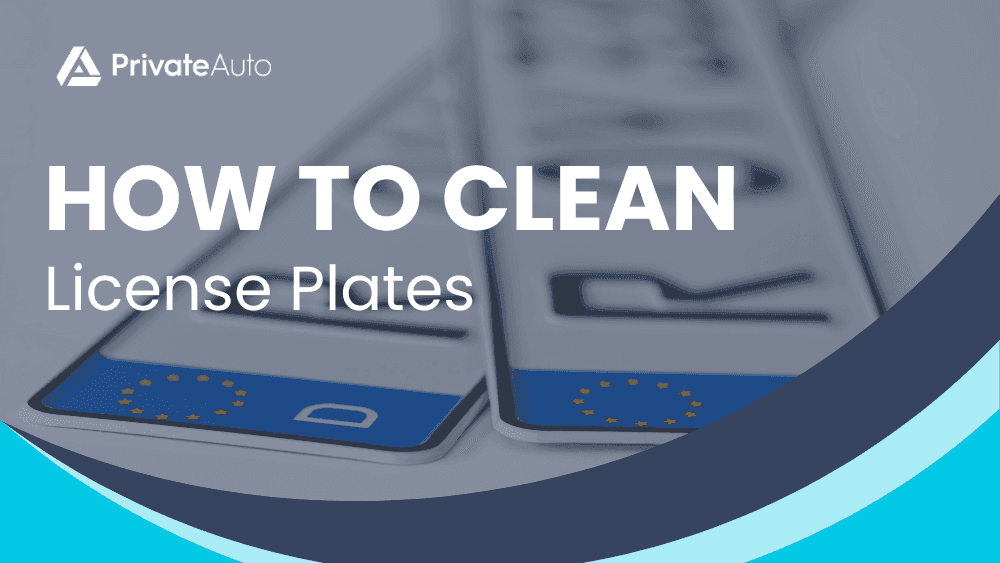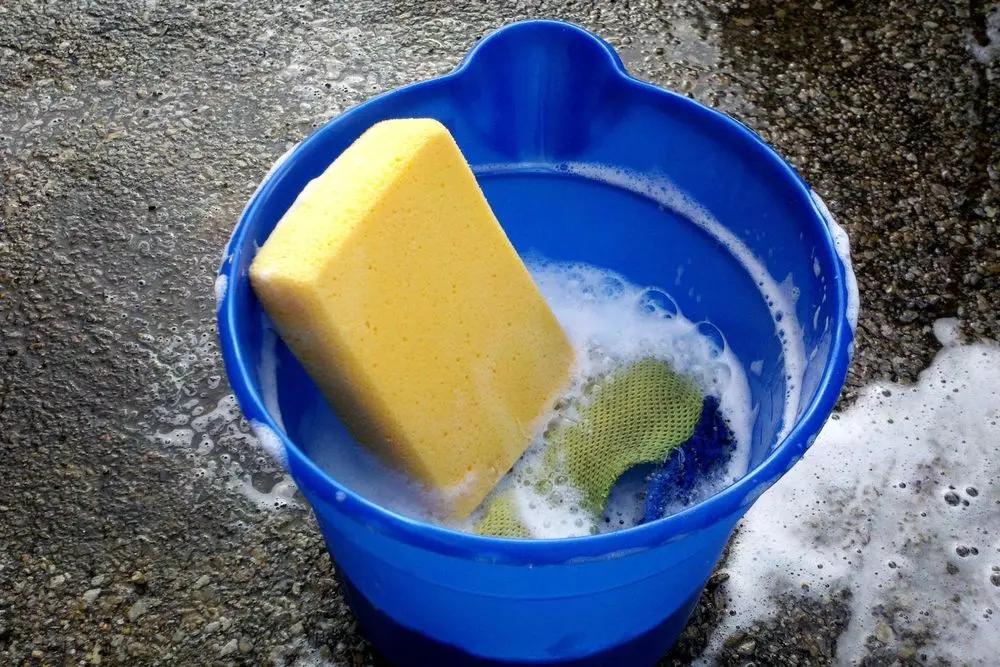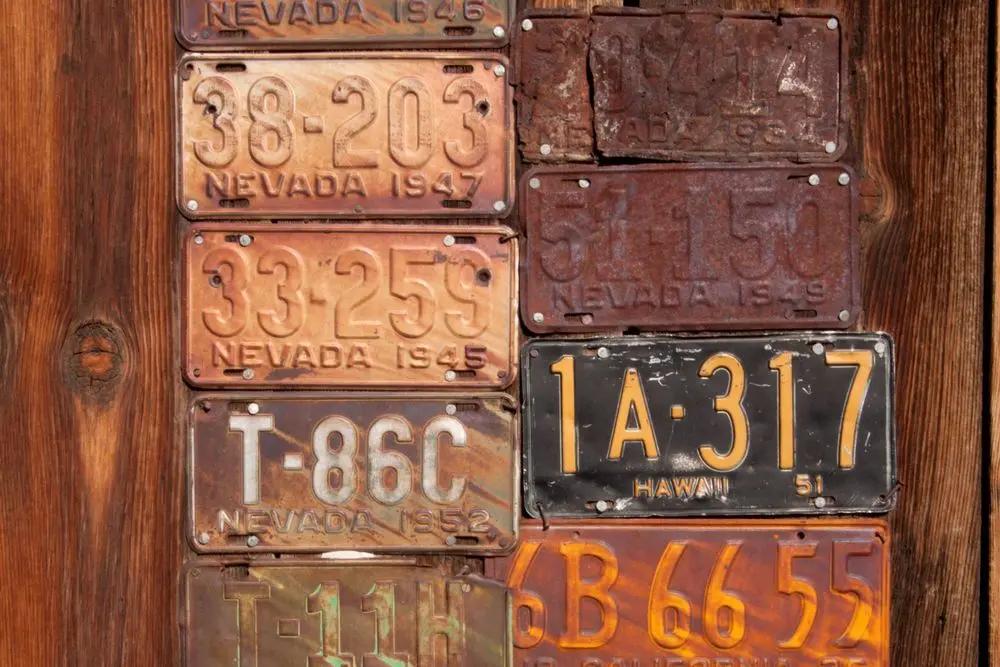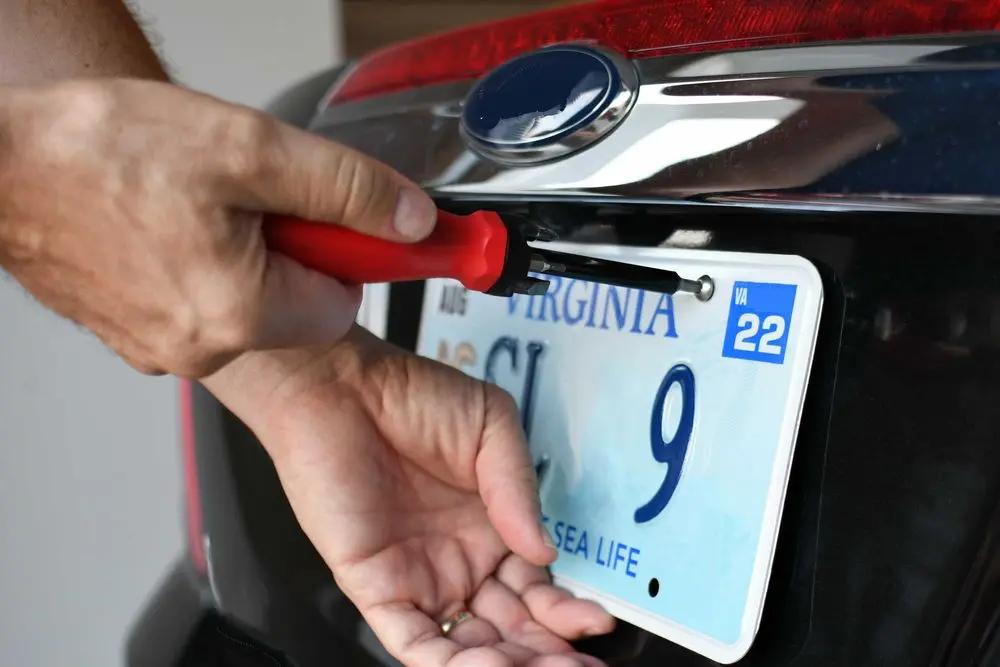How To Clean License Plates
License plates rarely remain clean and in good form for an extended period of time. They are exposed to dirt, mud, snow, salt, stones, insects, UV exposure, and weather. Cleaning your car’s license plates is a fairly easy task. All you need is some water, soap, and a sponge.
License plates rarely remain clean and in good form for an extended period of time. They are exposed to dirt, mud, snow, salt, stones, insects, UV exposure, and weather. Cleaning your car’s license plates is a fairly easy task. All you need is some water, soap, and a sponge.
US license plates are a rectangle measuring 6 inches by 12 inches for all cars, trucks, and trailers. Motorcycle license plates are smaller, measuring 4 by 7 inches. All states require vehicles to have a rear license plate.
Some states require a front license plate, while others do not. Front license plates get a lot more wear and tear than rear license plates.
Regardless of the type of license plate or the state you live in, it's important to follow applicable laws and rules, and ensure that your license plate is clean and installed properly.
We've put together a quick and easy guide on how to clean license plates so you can keep your car looking its best.
US license plates are a rectangle measuring 6 inches by 12 inches for all cars, trucks, and trailers. Motorcycle license plates are smaller, measuring 4 by 7 inches. All states require vehicles to have a rear license plate.
Some states require a front license plate, while others do not. Front license plates get a lot more wear and tear than rear license plates.
Regardless of the type of license plate or the state you live in, it's important to follow applicable laws and rules, and ensure that your license plate is clean and installed properly.
We've put together a quick and easy guide on how to clean license plates so you can keep your car looking its best.
Before You Try To Clean Your License Plates
When it comes to cleaning license plates, there are a few things you need to take into account.
What type of license plate are you trying to clean? This will determine the type of cleaner and tools you need. If the license plate is made of aluminum, you'll need a different cleaner than if it's made of plastic.
What’s the license plate’s condition? If it's spattered with bugs, you’ll need different solutions than if it’s rusted.
Having the wrong supplies can make the job harder and take longer than necessary. With the right tools and materials, you can get your license plates sparkling clean in no time!
What type of license plate are you trying to clean? This will determine the type of cleaner and tools you need. If the license plate is made of aluminum, you'll need a different cleaner than if it's made of plastic.
What’s the license plate’s condition? If it's spattered with bugs, you’ll need different solutions than if it’s rusted.
Having the wrong supplies can make the job harder and take longer than necessary. With the right tools and materials, you can get your license plates sparkling clean in no time!
How To Clean License Plates
Here are the steps to cleaning your car’s license plates.
Get The Right Tools And Washing Materials
Depending on the condition of your plates, you’ll need specific tools and cleaners. Here are some of the most common things used to clean license plates:
How To Clean Plastic License Plate Covers
Over time, plastic license plate covers can become stained and yellowed from exposure to weather and sun. There are a few simple steps you can take to remove dust and dirt, and restore them to their original condition.
Once it's completely dry, you can apply a protective coating of automobile wax to help keep it looking new. With just a little effort, your plastic license plate cover will be good as new!
•
Mix together a solution of warm water and dish soap.
•
Apply this to the license plate cover with a soft cloth or sponge.
•
Soak and scrub gently to remove any dirt or grime.
•
Rinse the cover with clean water.
•
If there are any stubborn stains remaining, you can try using a mild abrasive such as baking soda. Apply directly to the stain, then scrub with a brush before rinsing again.
•
Dry the license plate cover with a clean towel.
How To Clean License Plate Frames
It is important to clean your license plate frame every few months. Depending on the environment your car is in, you may need to do it more frequently. Here are some simple steps to follow in order to clean your license plate frame:
1. Remove any debris that is on the frame, using a soft cloth. Be sure to get in all the crevices and corners.
2. If the frame is made of metal, you can scrub it with vinegar and water to remove any built-up grime. Use a toothbrush or other soft-bristled brush to scrub. For plastic frames, mix equal parts vinegar and baking soda to create a gentle cleaning solution.
3. Rinse the frame with warm water.
4. Dry completely with a soft cloth.
5. Polish the frame with a metal polish, if desired.
1. Remove any debris that is on the frame, using a soft cloth. Be sure to get in all the crevices and corners.
2. If the frame is made of metal, you can scrub it with vinegar and water to remove any built-up grime. Use a toothbrush or other soft-bristled brush to scrub. For plastic frames, mix equal parts vinegar and baking soda to create a gentle cleaning solution.
3. Rinse the frame with warm water.
4. Dry completely with a soft cloth.
5. Polish the frame with a metal polish, if desired.
How To Clean a Digital License Plate
Like any other piece of electronics, a digital license plate can accumulate dust and dirt over time. This can interfere with the plate's ability to communicate with roadside readers. To keep your plate performing at its best, be sure to clean it on a regular basis.
All you need to clean your digital license plate is a soft cloth and some mild soap. Gently wipe down the plate with the cloth, being careful not to damage the surface. If the dirt is especially stubborn, you can use a cotton swab to lightly scrub at the dirt. Once you're finished, rinse the plate with clean water and dry it with a soft cloth.
All you need to clean your digital license plate is a soft cloth and some mild soap. Gently wipe down the plate with the cloth, being careful not to damage the surface. If the dirt is especially stubborn, you can use a cotton swab to lightly scrub at the dirt. Once you're finished, rinse the plate with clean water and dry it with a soft cloth.
How To Replace a License Plate
Whether your license plates have been rendered illegible by wear and tear, or your license plates were stolen, you'll need to replace them as soon as possible. The process of getting new license plates is fairly simple, but it does require a trip to the DMV. Here's what you need to do:
Buying or Selling A Car with PrivateAuto
Conduct private car transactions easily and safely with PrivateAuto. Our innovative platform connects buyers and sellers and gives them all the tools to complete the deal, from in-app financing to secure messaging to integrated payments. Get started with PrivateAuto today.
10 Easy Steps for Selling A Used Car with PrivateAuto
PrivateAuto makes selling your used car safe and easy. The sales process consists of a few simple steps:
1. Gather the required documentation
2. Create your PrivateAuto profile and get verified
3. List the car
4. Set your own terms
5. Vet incoming offers
6. Choose the buyer you like
7. Schedule the meetup
8. E-sign paperwork
9. Get paid instantaneously
10. Transfer ownership
1. Gather the required documentation
2. Create your PrivateAuto profile and get verified
3. List the car
4. Set your own terms
5. Vet incoming offers
6. Choose the buyer you like
7. Schedule the meetup
8. E-sign paperwork
9. Get paid instantaneously
10. Transfer ownership
License Plate FAQ
How do you clean a stained license plate?
For most license plate stains, all you need is some warm water and a mild dish-washing liquid or detergent. Use a towel or a tissue to dip into the water, then rub the license plate with it until the stain comes off.
You may need to apply some pressure to remove stubborn stains, but be careful not to scratch the surface of the plate. Once you are finished, rinse the plate with clean water and dry it with a soft cloth.
For stains that don’t respond to warm soapy water, try a pencil eraser.
You may need to apply some pressure to remove stubborn stains, but be careful not to scratch the surface of the plate. Once you are finished, rinse the plate with clean water and dry it with a soft cloth.
For stains that don’t respond to warm soapy water, try a pencil eraser.





